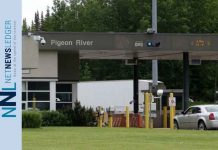Ottawa, ON – Closing the significant opportunity gaps between Indigenous and non-Indigenous Canadians will annually boost Canada’s GDP by $27.7 billion or 1.5% is the main conclusion of a report released today by the National Aboriginal Economic Development Board.
The report, Reconciliation: Growing Canada’s Economy by $27.7 Billion, demonstrates in hard numbers how keeping Indigenous Canadians out of the economy by under-investing in education, infrastructure and other services, has hit Canada’s bottom line. The report estimates that Canada’s GDP would grow by 1.5% or $27.7 billion per year if barriers preventing Indigenous Canadians from participating in the Canadian economy were removed.
“Investing in Indigenous peoples is an investment in Canada’s future prosperity,” said Dawn Madahbee Leach, Vice-Chairperson of the Board and General Manager of the Waubetek Business Development Corporation. “Full reconciliation with Indigenous peoples will not happen without economic reconciliation. It is not only the fair and right thing to do, but there is a strong and compelling business case for all Canadians.”
Previous work by the National Aboriginal Economic Development Board has highlighted the significant gaps between Indigenous and non-Indigenous Canadians in terms of their high school completion, university completion, labour force participation, employment and average annual income. The NAEDB’s Aboriginal Economic Progress Report (2015), discusses how some of these gaps have widened over time.
“Providing equal economic opportunity for Indigenous peoples will help Canada address the ongoing economic challenges caused by low productivity and demographic change from an aging population,” said Chief Terrance Paul, Board member and Chief of Membertou First Nation. “This includes equal access to education and training, and economic opportunities more broadly – from access to new jobs and equal employment conditions to resources for starting a new business.”
In its Reconciliation report, the NAEDB estimates that closing the productivity gap between Indigenous and non-Indigenous Canadians would lead to an increase of $27.7 billion to Canada’s GDP each year. This figure is the sum of the estimated increases in employment income earned by Indigenous peoples across all provinces and territories. Additionally, there is an estimated $8 billion “opportunity dividend” to gain each year from reduced poverty and lower healthcare, social and other associated costs.
In other words:
- If Indigenous peoples had the same education and training as non-Indigenous peoples, the resulting increase in productivity would mean an additional $8.5 billion in income earned annually by the Indigenous population.
- If Indigenous peoples were given the same access to economic opportunities available to other Canadians, the resulting increase in employment would result in an additional $6.9 billion per year in employment income and approximately 135,000 newly employed Indigenous people.
- If the poverty rates among Indigenous Peoples were reduced, the fiscal costs associated with supporting people living in poverty, would decline by an estimated $8.4 billion annually.
- Overall, if the gap in opportunities for Indigenous communities across Canada were closed, it would result in an increase in GDP of $27.7 billion annually or a boost of about 1.5% to Canada’s economy.
Current federal government commitments
As of last year, the Government of Canada has been pursuing an ambitious reconciliation program for Indigenous Peoples, which includes the $8.4 billion earmarked in the most recent federal budget to improve the socio-economic conditions of Indigenous peoples and their communities.
The NAEDB sees this as an important first step on the road to reconciliation, but emphasizes that there is much work to be done.
“The Government of Canada has taken positive first steps, significant investments will be like a ‘down payment’ on future economic growth. But reconciliation needs to remain a long-term priority. Reconciliation will take a generation of sustained effort, and full reconciliation with Indigenous Canadians cannot occur without economic reconciliation,” added Madahbee Leach.
“Canadian governments at all levels have a stake in closing these gaps and have a role to play,” said Chief Terrance Paul.
The National Aboriginal Economic Development Board
Established in 1990, the National Aboriginal Economic Development Board is a Governor in Council appointed board mandated to provide strategic policy advice to the federal government on issues related to Indigenous economic development. Comprised of First Nations, Inuit, and Métis business and community leaders from across Canada, the Board helps governments to respond to the unique needs and circumstances of Indigenous peoples in Canada.







